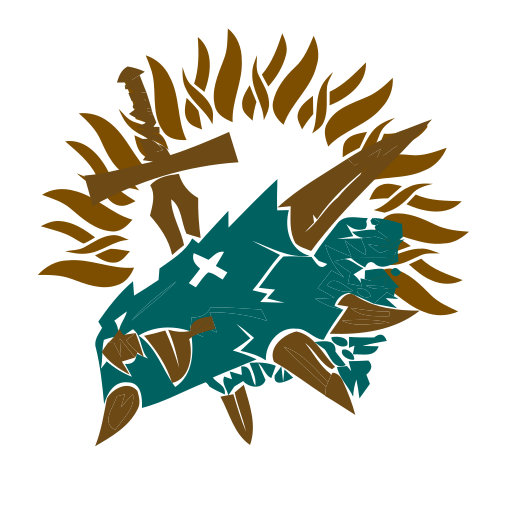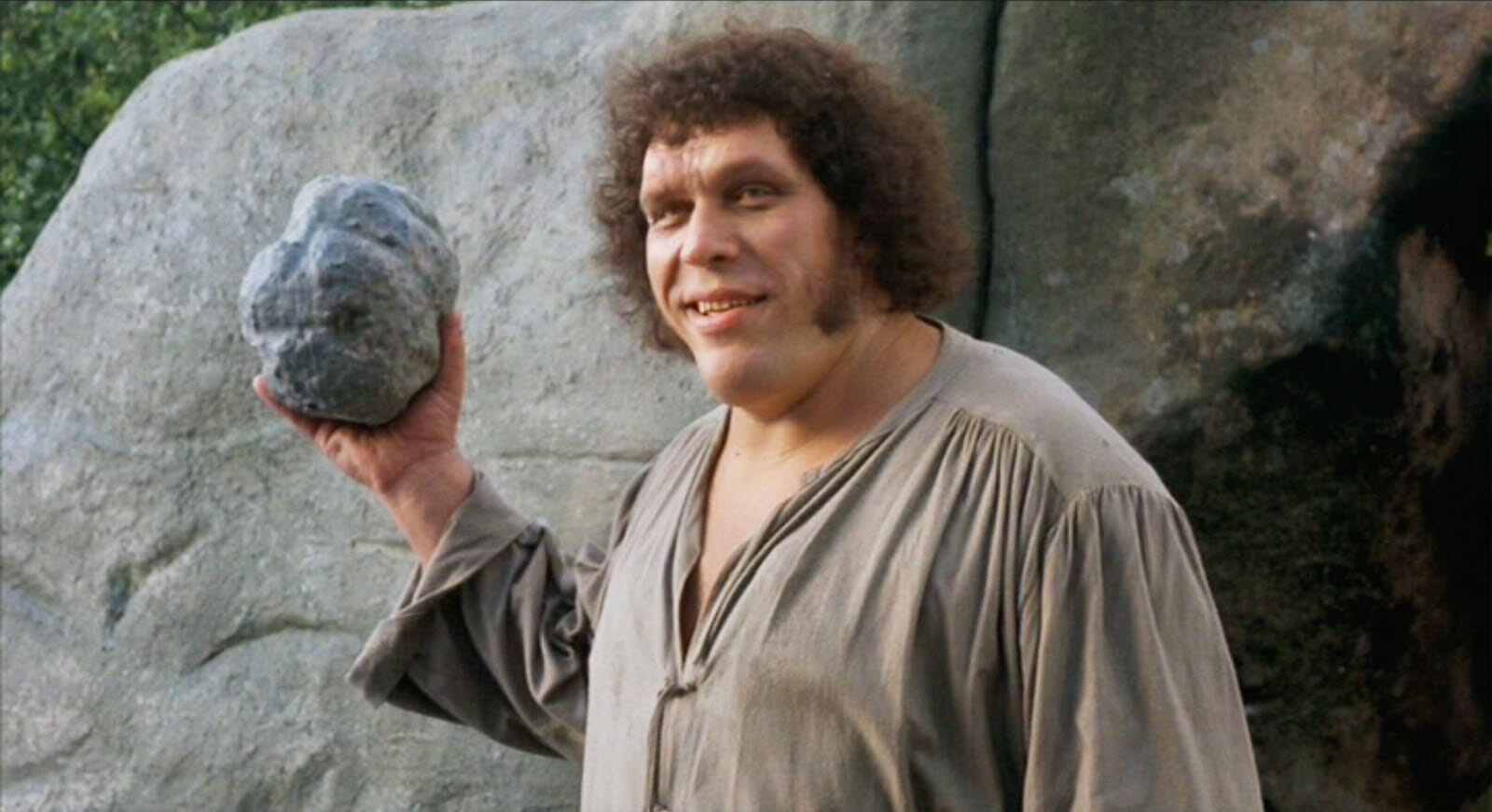I don’t care how long this has been going on, I ain’t fucking around near that thing.
Let’s hope it doesn’t get destroyed by idiots.
I’m going to destroy it
Listen I’m trying very hard not to go there with a hamer and a chisel. But in case I couldn’t help myself to take a train to Finlande, everyone could understand the urge against which I lost.
Better keep it low profile, or some tourists will try some bad ideas.
American Boy Scout leaders.
Ruining historic natural monuments is somehow not first on the list of American Boy Scout leader atrocities 🫤
For anyone else out of the loop.
https://en.wikipedia.org/wiki/Boy_Scouts_of_America_sex_abuse_cases
For anyone out of the other loop.
Or this more recently 🙁
RIP Sycamore Gap tree.
I feel like if this was my town idiots would have done it long ago by all means necessary
A stick of dynamite might offset it enough to roll.
I was thinking trucks
Not gonna budge with a truck but a large bottle jack or two might do the trick
Very impressive from that view! But more stable than that tiny contact point would suggest.

Neat. The trick rock has a pet tree
What happened 11,000 years ago?
The ice sheet covering northern europe started to melt away, and with that we got what is called “glacial erratics”. Rocks had traveled from once place to another, and then settled. In Sweden we call those “giants throw”, because it was assumed that the only way those big rocks could be where they are was if a giant had thrown it.
In Finland those are called siirtolohkare (moved boulder) or hiidenkivi (devil’s rock)
I think we have the same terminology then, we also call them “flyttblock”. Is there a story behind them being called Devil’s rock? It sounds very finnish to me to be honest.
It’s not literally devil (paholainen) but Hiisi, which is something similar in finnish mythology which obviously doesn’t have a translation.
It’s likely simply “only devil could have brought that stone here”
Well “hiisi” translates to “devil” but that’s very much a political translation as far as such things existed back then.
Translating “Hiisi” as “the Devil” is quite a fuck-the-pagans translation.
Hiisi (Finnish pronunciation: [ˈhiːsi]; plural hiidet [ˈhiːdet]) is a term in Finnic mythologies, originally denoting sacred localities and later on various types of mythological entities
Hiisi was originally a spirit of hill forests (Abercromby 1898). In Estonian hiis (or his) means a sacred grove in trees, usually on elevated ground. In the spells (“magic songs”) of the Finns the term Hiisi is often used in association with a hill or mountain, as a personage he also associated with the hills and mountains, such as the owner or ruler of the same. His name is also commonly associated with forests, and some forest animals.
https://en.m.wikipedia.org/wiki/Hiisi
I think “the Fae” would be a more accurate translation, theology-wise.
it was actually around 11025 years ago. i first heard about this in 1999, and it was 11000 years then.
You’re not gonna believe it.
Ice age
The age sends my imagination racing, I wonder if there was a Proto-Indo-European name for it, as a remote curiosity/enigma.
“They say that somewhere up north, half a moon beyond the most remote village, there is a large stone put on top of another by the hand of the Earth Goddess herself.”
When earthquake?
Finland is not close enough to the edges of tectonic plates, so if we get earthquakes here at all, they’re barely noticeable.
Not being close to a plate does not necessarily mean only small quakes.
There were a series of what today would be absolutely devastating earthquakes in the Midwestern U.S., far from any tectonic plates, between 1811 and 1812.
https://en.wikipedia.org/wiki/1811–1812_New_Madrid_earthquakes
Being in the middle of the large and relatively stable Eurasian plate does help, though. The Mediterranean region, being closer to the edge region, does experience quite a bit more, though, and some strong ones have historically been felt all the way up here, too.
so if we get earthquakes here at all, they’re barely noticeable.
…and caused by the sea bed rising after it was compressed because of the weight of the glacier during the ice age
My cat would go there and push it over…
There’s not a feline or a man alive who could move that without tools.
If cats could read and open doors, they would collectively go to Finland to push it over with a huge mass of pure cat power.
With some levers, definitely doable. With just paws? Eh.
Also, cats can definitely open doors. Not all cats, but I know a few.
I’m talking doors to the outside so they can escape to Finland to knock the rock over.
I get that’s what you meant, but technically the way it was worded…
And the cats I know are cats who frequently roam outdoors and are Finnish. Perhaps they’ve just not seen this post, as outside cats rarely doomscroll.
Indeed they don’t doomscroll much. See my first point, re the fact that cats can’t read.
Being literate isn’t a requirement for scrolling though, although I do hesitate on how much “doom” applies to things like this.
But that’s clearly an indoors house-cat, so my hypothesis that outside cats doomscroll less is still valid.
You understimate the sheer amount of “i-want-to-push-over-things-energy” of a cat.
If that was a comma, it would be way more impressive…
In Europe generally commas are used for decimals and periods for marking thousands
Then, it’s a very light rock!
Having exactly 500 kg up to three decimal places would still be quite impressive!
Yeah, that really makes those figures more significant!
Or some aliens with antigrav guns were like “Hey you know what would be funny?!?”
-
Rock is in the floor
-
Ice age ends, water floods dirt around the rock away
-
Rock either rolls down or stays
We have lots of these in Austria and at least here this is how they became like that.
-
Can anyone tell me why the bottom rock is so smooth? I imagine people come and sit on it and touch them both frequently, and that they are two rocks from different places but they each look very dissimilar. I guess what I am really asking, is the bottom rock so smooth because of the big boy topping it?
Likely glaciation, the bottom rock was likely on the bottom of an ice sheet and millions of tons of ice moving over it over time had smoothed it out.
The top rock is probably from many miles away and was carried and placed there from the receding glacier. To me the top rock looks like it is a completely different type of stone then the bottom.
Awesome. That would make sense.
Nice, what bouldering grade?
I’m not convinced that weighs 500 tons, that’s the same as at least 65 of the largest African elephants or 2.5 of the largest blue whales
Morning, yes, I’ll have 65 of your largest African elephants please.
After some googling, some of the heavier rock types are 3g/cm^3, which is 3000kg/m^3
If we use the person as a rough ruler of 1.6m, the rock is about 5 person wide, and 3 person high (eye measure), give or take. And if we say it’s 3 person deep, then it has a rough mass of 5*3*3*1.6 = 216 000 kg, which is in the same order of magnitude.
Close enough to check out, I’d say.
Your edit is correct except I get 553 tons! I’m still shocked it’d easily tip the scales vs 2 large blue whales
Edit: ahh you accidentally did 5x5x3 instead of 5x3x3
I’m still shocked it’d easily tip the scales vs 2 large blue whales
Rocks are dense and blubber not so much, I suppose
Oh, whoops, I did make a mistake! Thanks for the correction
You got me confused.
5*3*3*1.6*3000
is the same as
[(5*1.6) + (3*1.6) + (3*1.6)]*3000
[(51.6) + (31.6) + (3*1.6)]*3000 = 18.8 * 3000
5331.63000 = 72 * 3000
5*3*3*1.6 is not the same as (5*1.6)*(3*1.6)*(3*1.6), however
The reason we multiply with 1.6 on every dimension is because the ruler we use is 1.6m long. We effectively create a new unit, and have to convert. If a length is 5 person wide, then in reality it’s 5*1.6 = 8 meters long, where 1.6 is the conversion ratio from the unit of ‘person’ to the unit of ‘meter’. And this applies for every individual measurement.
Also, 5*3*3*1.6 is not the same as (5*1.6)+(3*1.6)+(3*1.6) in the first place
Useless. We all want something standard. Like how many pygmy marmosets that is.
Is there a country that uses a different thousands separator based on unit?
Yes, in a lot of places a period is used for order-of-magnitude separation and comma is used for decimal places.
In this title the use seems inconsistent.
Right, i think he’s asking if there’s some culture where the inconsistency is designed based on unit. So, for example, period for years, comma for weight.
I think it’s simply an error. Maybe AI generated?
Either the rock weighs exactly 500kg to an impressive precision and has been there for eleven thousand years or it weighs five hundred thousand kg and has been there for exactly 11 years.
It’s got something for everyone.
I don’t care how long it been balancing there I wouldn’t dare stand that close to it, be just my luck it pick that moment to shrift.
Finland uses space for thousands (and comma for decimals), so an article in Finnish would have 500 000 kg

















